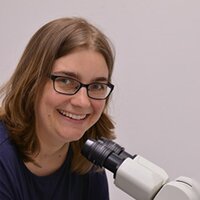Single-Cell Analysis
We support a large variety of single-cell biology methods to help you accomplish more.
Cells are as unique as the researchers who study them. Using single-cell genomic applications, researchers are able to identify differences between individual cells in a seemingly homogeneous population.
We have developed an entirely new approach to single-cell genomics based on microfluidic technology. Our innovative technologies enable highly parallel RNA and DNA analysis from samples containing only a few hundred cells. Individual cells for multiple genomic applications can be efficiently isolated, processed and profiled though a streamlined single-cell workflow.
mRNA sequencing
Researchers are analyzing the transcriptome at greater resolution to uncover new mechanisms of cell development, metabolism and disease. Single-cell mRNA sequencing on the C1™ system can reveal the unique cellular makeup of tissues, including the identification of important, rare cell populations that cannot be identified by bulk analysis. This tool can also uncover the genetic programs that drive development and the mechanisms underlying cellular responses to the environment, disease and drug response.
With the C1 single-cell mRNA sequencing workflow, you can:
-
Automatically process up to 800 individual cells per run
-
Characterize the cellular makeup of a tissue and compare the abundance of specific cell types among samples
-
Measure expression levels of genes, alleles and spliced variants
-
Compare tissue or cell type expression levels
-
Fully characterize T cell clonotypes
-
Map transcription initiation sites
-
Characterize alternate splicing patterns
-
Evaluate post-transcriptional activity
-
Discover new transcripts and gene fusions
Targeted gene expression
Our single-cell gene expression workflow combines our innovative C1 system with the Biomark™ HD system to illuminate differences, enabling profiling up of to 96 single cells for the expression of up to 96 genes in just a few hours using standard reagents and easy-to-use single-cell analysis tools. The automated workflow, ready-to-use reagents and optimized IFCs (integrated fluidic circuits) eliminate tedious pipetting steps and sample mixing to increase productivity.
The single-cell gene expression workflow using C1 and Biomark systems lets users:
-
Choose Delta Gene™ or TaqMan gene expression assays
-
Use picograms of starting material to screen against hundreds of genes
-
Explore 96 single cells across 96 assays in a single run
-
Generate more data per dollar using nanoliter-scale reaction volumes
-
Obtain consistent and reproducible data with every run
miRNA expression profiling
MicroRNAs (miRNAs) regulate mRNA expression by mRNA degradation and gene silencing. These small, noncoding RNAs regulate thousands of human protein-coding genes that are involved in biological processes – such as differentiation, development and cell cycle management – as well as illnesses including cancer and cardiovascular disease.
A single miRNA may regulate several biological systems, introducing cell-to-cell variability and making it difficult to reliably interpret and predict miRNA targets. Studying miRNA expression at the single-cell level offers greater insight into the differences between cells in the same population.
Using our C1 and Biomark HD systems, the workflow for single-cell miRNA expression profiling provides an easy and reliable way to automatically capture and process individual live cells for routine miRNA analysis.
Single-cell miRNA expression profiling allows users to:
-
Use reliable chemistry and proprietary microfluidic technology to enable cell isolation and detection of miRNAs at the single-cell level
-
Automate cell capture, staining, lysis, reverse transcription and miRNA amplification to simplify cell handling and eliminate systematic error
-
Visualize and verify single cells with a variety of surface stains
-
Generate and store miRNA libraries and interrogate single cells later for a diverse range of miRNAs
-
Go from cell to analyzed data in less than 13 hours
-
Process 96 single cells across more than 370 miRNAs in a single run
Whole genome sequencing
Researchers are profiling genetic signatures of tumors and other complex diseases to identify causal and regulatory mutations. These diseases are often driven by somatic mutations that originate in individual cells and create genetically diverse clonal populations. As mutated cells proliferate, they derive complex polyclonal networks with low-abundance populations that cannot be fully interrogated by deep sequencing of bulk samples. In order to associate particular variants with specific cell populations, each cell must be measured independently.
With whole genome sequencing (WGS), users get a more complete assessment. The C1 single-cell WGS workflow is the only approach that enables users to comprehensively and reliably identify mutations in both regulatory and protein-coding regions of the genome and directly associate these variants to clonal populations.
Single-cell WGS on the C1 system offers:
-
New power to discover the genetic signatures of specific cell populations
-
Tailored sensitivity for single-cell input
-
High chromosomal coverage, minimal bias and a low error rate
-
Sufficient template yield to do follow-on screening and validation studies
-
An optimized protocol that reduces reagent costs
Whole exome sequencing
Exome sequencing enables the study of protein-coding regions of all 22,000 genes that are known to contain more than 85% of disease-causing variants. Bulk methods are unable to provide the clonal context of infrequent somatic mutations, making it impossible to define genetic signatures for particular cell populations. By sequencing the exome of individual cells, users can reveal the true heterogeneity and cell lineages present in a sample.
The C1 single-cell whole exome sequencing workflow is the easiest method for discovering putative variants at the first stages of your research. One integrated workflow lets users isolate, stain, lyse, amplify and prepare NGS libraries from 96 individual cells in under 24 hours.
The C1 single-cell whole exome sequencing workflow:
-
Identifies novel or low-frequency variants at the first stage of experimental approach
-
Provides a sensitive assay and an easy workflow to individualize and process low quantities of genomic DNA from single cells
-
Collects data three times faster
-
Offers optimized protocols that reduce standard reagent costs
Targeted DNA sequencing
The Standard BioTools™ single-cell targeted DNA sequencing workflow provides users the power to identify somatic mutations in known genes or loci from cell populations that are undetectable in bulk samples. This process enables new insights into intertumor and intratumor heterogeneity, cell lineage and clonal architecture, mosaicism involved in autoimmune disorders and disease prediction and progression.
One integrated workflow lets users isolate, stain, lyse, amplify and prepare NGS libraries from 96 individual cells in less than 24 hours.
The C1 single-cell targeted DNA sequencing workflow:
-
Provides a sensitive and easy workflow to individualize and process low quantities of genomic DNA from single cells
-
Enables discovery of novel or low-frequency somatic mutations in rare cell populations that are undetectable in bulk samples
-
Goes from single-cell suspension to library prep from 96 samples in less than 24 hours with minimal hands-on time
-
Targets regions of interest with 480 PCR amplicons per cell to detect nonsense and missense mutations, frameshift, indels and splice site mutations
-
Achieves high genomic coverage, minimal bias and low error rate
Single-cell proteomics
Protein analysis
Understanding complex processes in heterogeneous tissues lies at the heart of modern biology. The ability to identify cell subpopulations and their state and to characterize their function is leading to breakthroughs in basic analysis, translational research and drug development.
Single-cell protein analysis by mass cytometry enables the most comprehensive profiling of cell surface and intracellular protein markers. With Maxpar™ metal-conjugated antibodies, a system, and optimized data analysis and visualization tools, you can perform single-tube mass cytometry experiments to produce data on:
-
Phenotype
-
Signaling state
-
Transcription factors
-
Cytokine, chemokine and growth factor expression
-
Proliferation and cell cycle status
-
Health and viability
Make the complex routine. Learn more about CyTOF™ systems.
Customer Stories
Learn more about how our customers are leveraging Standard BioTools technology.
Scott Magness, PhD

Investigating transcriptomic changes at the microscale level
Jo Vandesompele, PhD

Jo Vandesompele at Ghent University discusses a deep dive into single-cell sequencing
Christophe Lancrin, PhD

Christophe Lancrin on revealing new transcription factors using C1™ and Biomark™
Shyam Prabhakar, PhD

Shyam Prabhakar explores signatures of patient survival and EMT in colorectal tumors
Simone Mayer, PhD

Simone Mayer, PhD, explains how using multimodal analysis helped reveal new insights
Jonathan M. Irish, PhD

Combinatorial, single-cell approaches to explore the complexity of biologic systems
Scientist Michael Stubbington, PhD

A new single-cell sequencing tool brings fresh insight to functional T cell studies
Shyam Prabhakar, PhD

Analysis of single-cell transcriptomes in colorectal cancer by Shyam Prabhakar
Hartland Jackson, PhD

Entering an era of new biology
Daniel Schulz, PhD

Discovering a chemokine’s purpose in fighting tumors using RNA and protein co-detection
Chad Stevens, MS

Rapid-fire Q&A: We give you a topic, you tell us what’s on your mind.
Marcelo Sztein, MD

Rapid-fire Q&A: We give you a topic, you tell us what’s on your mind.
Marina Malovichko, PhD

Rapid-fire Q&A: We give you a topic, you tell us what’s on your mind.
Zinaida Good, PhD

Finding biomarkers for toxicity and progression in lymphoma using CyTOF™ technology
Jana Fischer, PhD

Paving a new road for spatial biology in precision medicine
Dr. Dexi Chen, PhD, MD

Achieving multi-omic insights with microfluidics and CyTOF™ technology
Dr. Luc Teyton, MD, PhD

How one lab explores the immune system one T cell at a time
Ansuman Satpathy, MD, PhD

Stanford’s Ansu Satpathy designed single-cell T-ATAC-seq, now available at Script Hub
Kelly Nudelman, PhD

Kelly Nudelman and Tae-Hwi Schwantes-An discuss sample identification
Leisha McGrath, PhD student

A microfluidics-based gene expression assay to monitor fish health
Nicole Bakkegård Goecke, PhD

Nicole Bakkegård Goecke, PhD, discusses detecting and preventing disease in animals
For Research Use Only. Not for use in diagnostic procedures. Patent and License Information: www.standardbio.com/legal/notices. Trademarks: www.standardbio.com/legal/trademarks. Any other trademarks are the sole property of their respective owners. ©2025 Standard BioTools Inc. All rights reserved.
